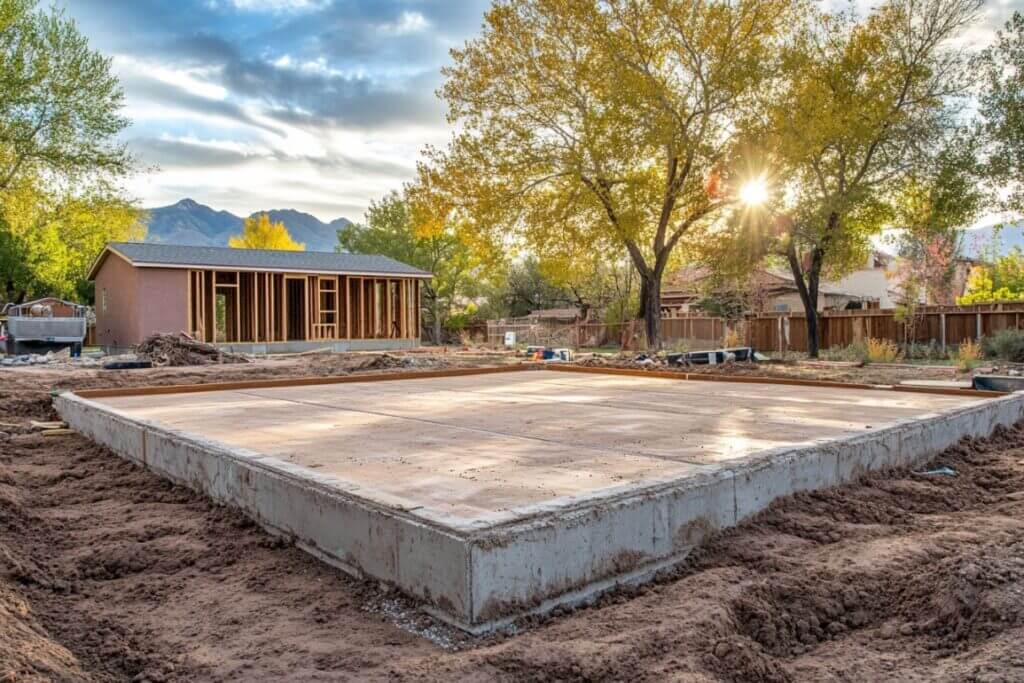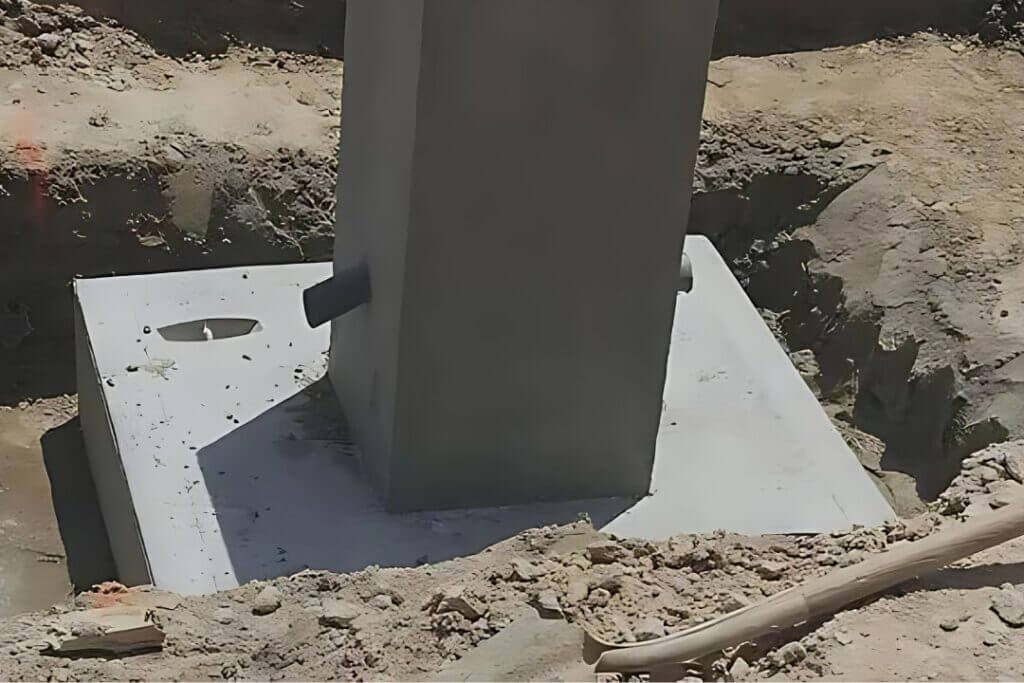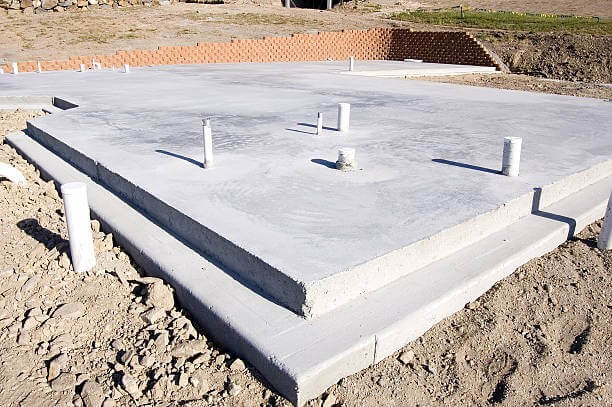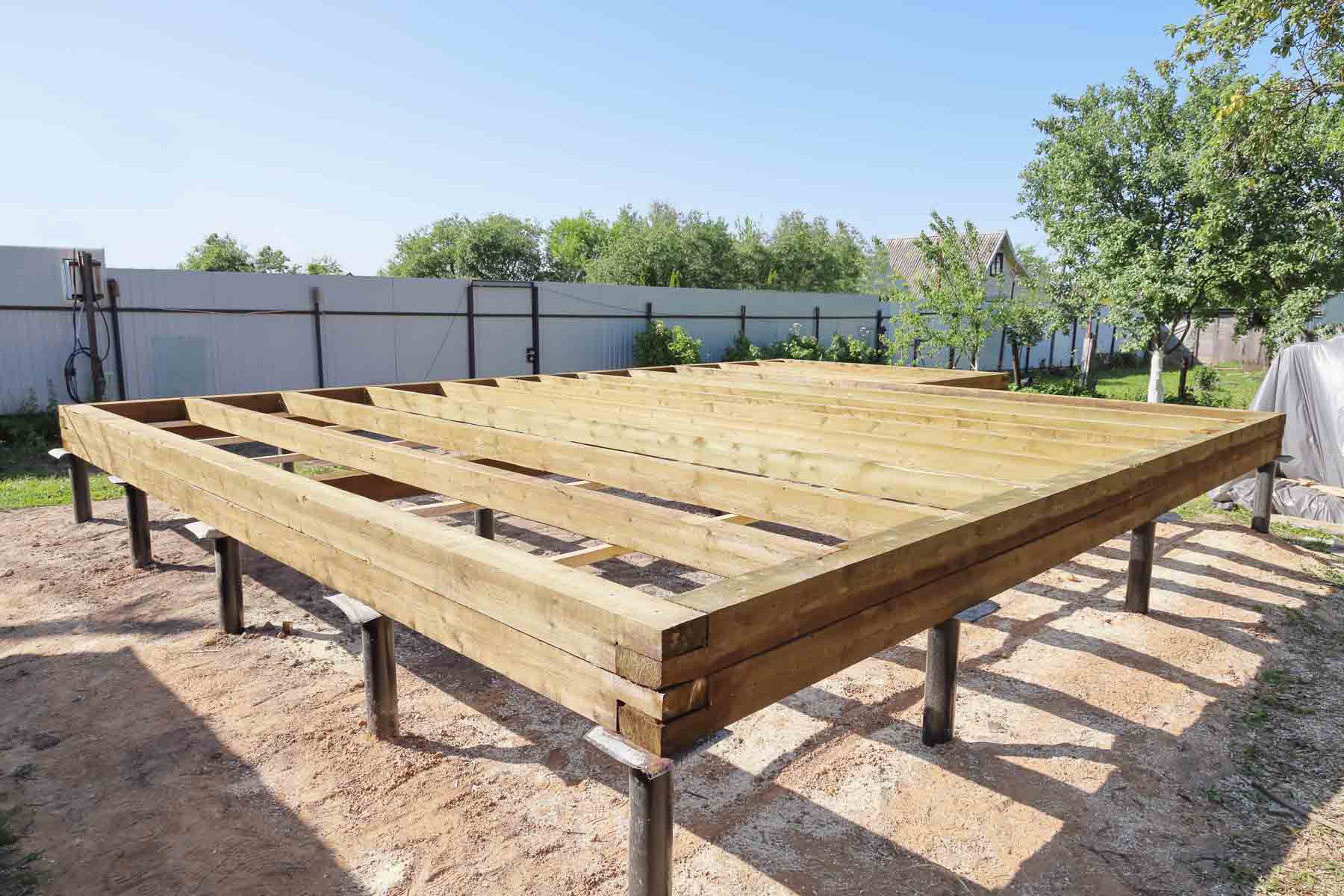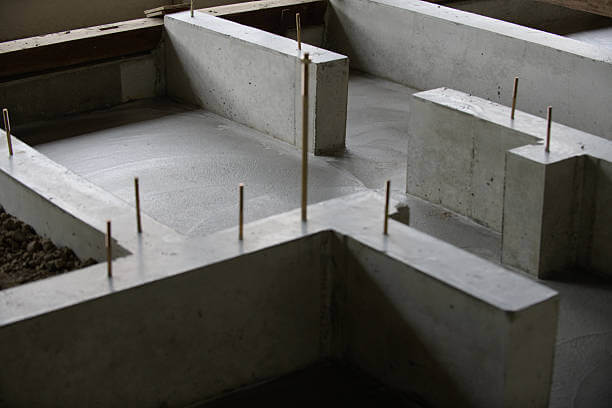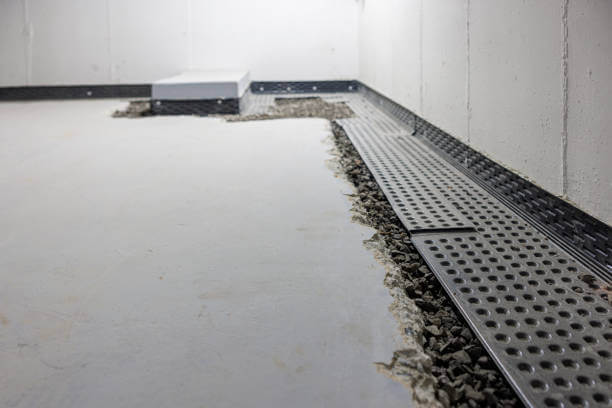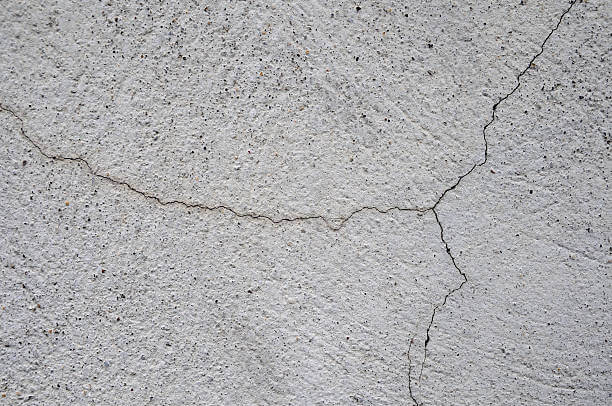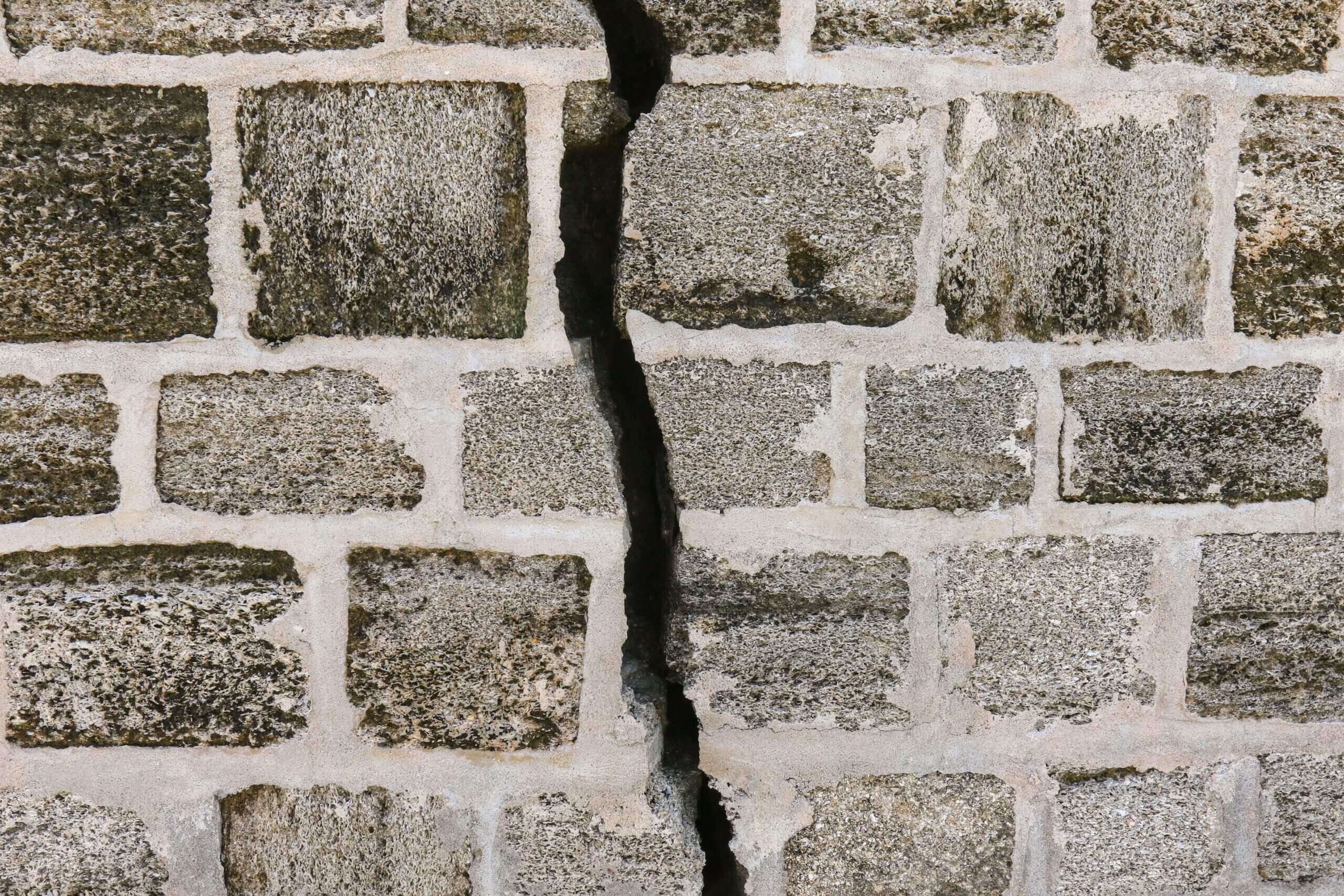What Is a Foundation?
A home’s foundation is more than just concrete — it’s what keeps your house stable, safe, and dry. The type of foundation you choose affects everything from your home’s durability and energy efficiency to its long-term repair and maintenance needs.
Foundations aren’t one-size-fits-all. The right option depends on your climate, soil conditions, and whether you want extra storage or living space. Below, we’ll compare the most common foundation types, explain their pros and cons, and help you understand which one might be the best fit for your home.
What Types of Foundations Are There?
There are eight main types of foundations used in residential construction: slab, crawl space, basement, pier and beam, pile, T-shaped, raft (mat), and drilled shaft (caisson). The right choice depends on your home’s location, soil conditions, and whether you want additional space for storage or living.
In general:
- Slabs are affordable and common in warmer climates.
- Crawl spaces and basements provide system access or living/storage space.
- Piers, piles, and caissons offer stability on uneven or weak soils.
- T-shaped and raft foundations handle frost or expansive soil conditions.
The table below provides a quick comparison of each foundation type, including where it works best, its pros, and its drawbacks.
| Foundation Type | Best For | Pros | Cons |
|---|---|---|---|
| Slab Foundation | Warm climates, budget-conscious builds | Affordable, quick to build | No access to plumbing/electrical, may crack in cold climates |
| Crawl Space | Areas with moderate moisture | Easy utility access, ventilation | Prone to moisture, requires waterproofing |
| Basement | Cold climates, need extra living/storage space | Adds usable square footage, deep footing | High cost, water intrusion risk |
| Pier and Beam | Uneven terrain, older homes | Good ventilation, adjustable | Piers can shift over time, more maintenance |
| Pile Foundation | Weak or unstable soil, flood-prone areas | Extremely stable, supports heavy loads | Expensive, complex installation |
| T-Shaped Foundation | Cold climates with frost | Durable, frost-resistant | Labor- and material-intensive |
| Raft (Mat) Foundation | Weak or expansive soils | Even weight distribution, prevents settlement | High concrete cost |
| Drilled Shaft (Caisson) | Large/heavy structures, poor surface soil | Excellent load-bearing capacity | Requires specialized equipment |
1. Slab Foundation
A concrete slab foundation is a flat layer of concrete poured directly onto the ground. It’s one of the most common foundation types in the U.S., especially in warmer regions where frost is not a concern. Slabs are cost-effective and fast to install, making them popular in new construction and budget-friendly builds.
Pros:
- Affordable and quick to construct
- Requires less excavation than basements or crawl spaces
- Energy-efficient since there’s no air circulation beneath the home
Cons:
- Limited access to plumbing and electrical lines once the slab is poured
- Can crack in cold climates due to freeze-thaw cycles
- Provides no extra storage or living space
➤ Learn more about concrete slab foundations and floating slab foundations.
2. Crawl Space Foundation
Crawl space foundations raise the home above the ground, leaving a small, accessible space beneath the house. This space provides easy access to plumbing, electrical systems, and other utilities, making maintenance more convenient.
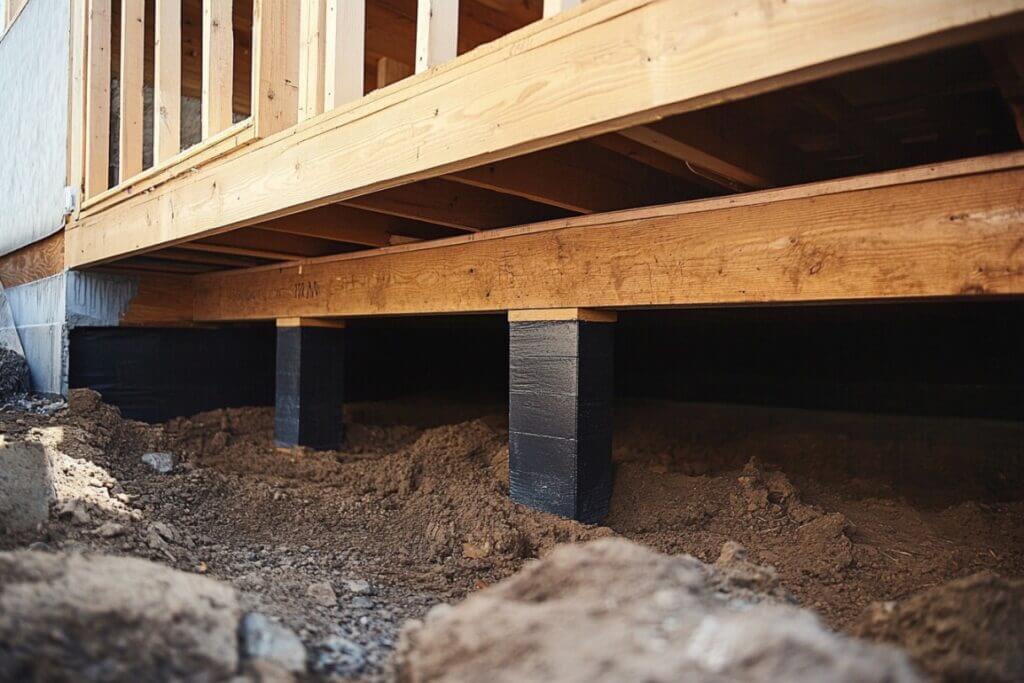
Pros:
- Better ventilation beneath the home, which can help with air circulation.
- Utility systems are easier to access and repair.
- Works well on sloped lots where a slab wouldn’t be practical.
Cons:
- Prone to moisture buildup, mold, and pests if not sealed and ventilated properly.
- Requires added waterproofing and insulation to avoid energy loss.
- Not as durable as deeper foundation types in high-moisture regions.
➤ Considering a crawl space foundation? Read our guide to crawl space encapsulation.
3. Basement Foundation
A basement foundation provides a full-height space below ground level that can be used as additional living or storage space. Basements are common in colder climates, where the foundation needs to be deep to avoid frost.
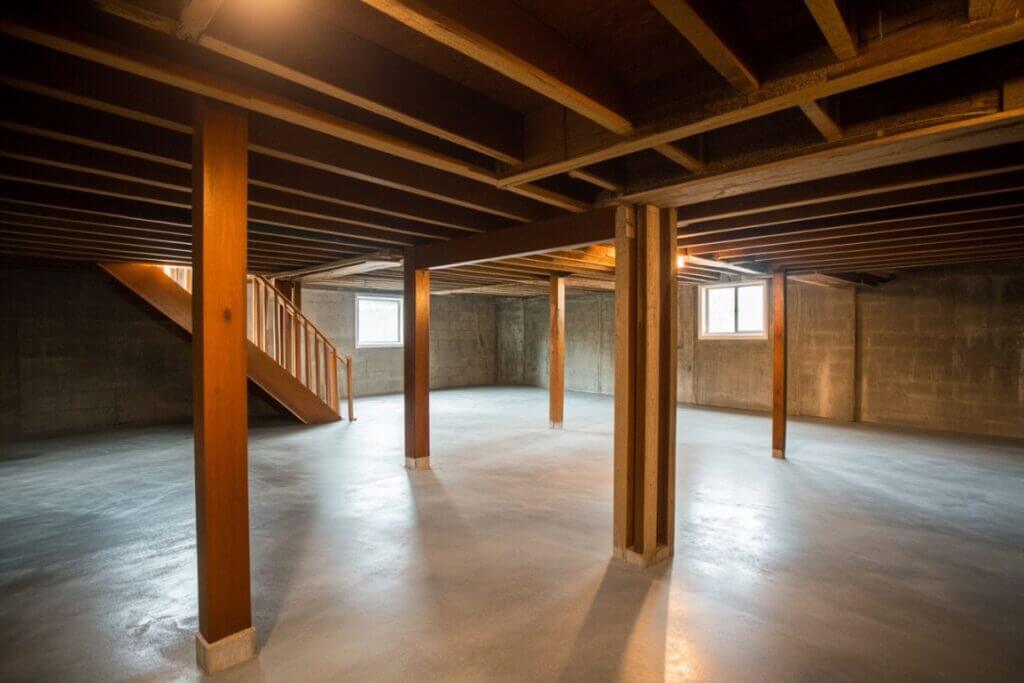
Pros:
- Provides significant additional space; can be finished as living areas or left for storage.
- Offers protection from frost damage in cold climates.
- Strong and durable when properly waterproofed.
Cons:
- Expensive to construct compared to slabs or crawl spaces.
- Highly prone to water intrusion if drainage and waterproofing aren’t in place.
- Excavation and construction take more time.
➤ Compare the best basement waterproofing methods in our guide.
4. Pier and Beam Foundation
Pier and beam foundations use vertical posts (piers) to support beams that hold up the house. This type of foundation is ideal for homes built on uneven or sloped terrain, as it allows for elevation adjustments.
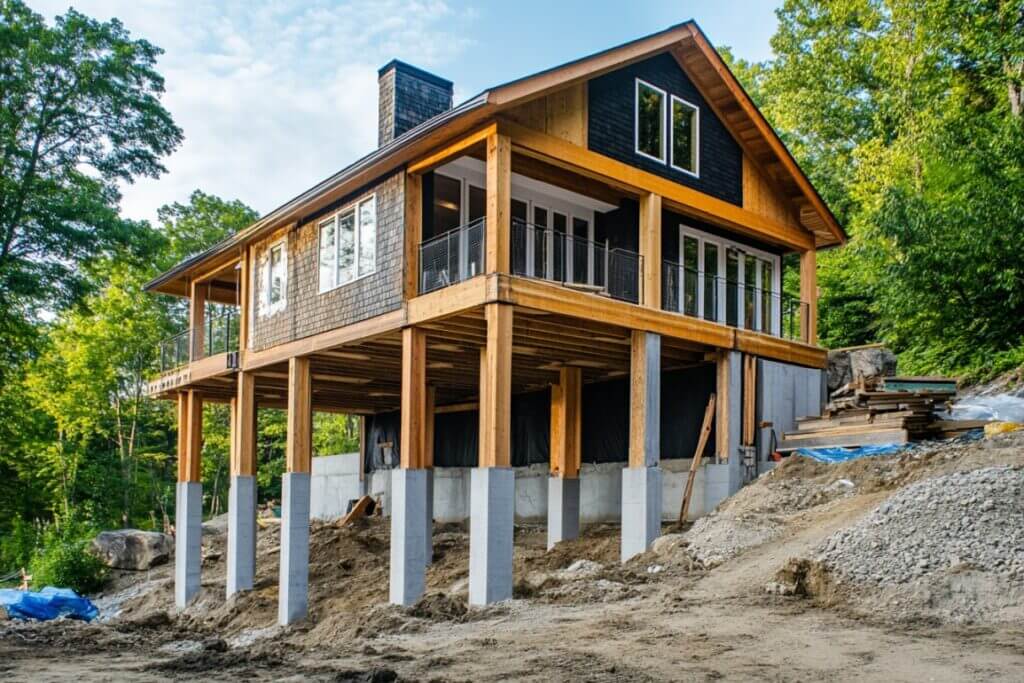
Pros:
- Homes can be raised and adjusted if soil movement occurs.
- Provides good ventilation under the home.
- Easier access to plumbing, wiring, and ductwork than slabs.
Cons:
- Piers may shift or deteriorate over time, requiring repairs.
- The crawl space beneath can be prone to moisture issues if not sealed.
- Requires more routine maintenance than slabs.
5. Pile Foundation
Pile foundations consist of long, cylindrical supports (steel, concrete, or timber) driven deep into the soil to support the home on solid ground. These foundations are particularly suited for large buildings or homes in flood-prone areas.
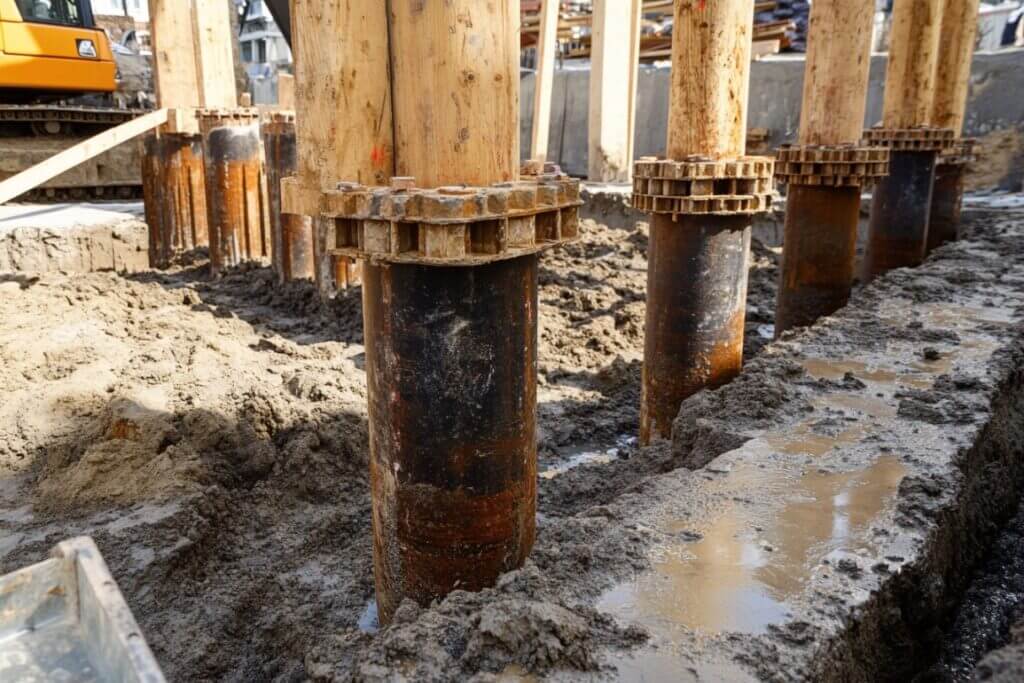
Pros:
- Provides excellent stability, even in very poor soil conditions.
- Handles very heavy loads, making it suitable for large homes or buildings.
- Reduces the risk of settlement compared to shallow foundations.
Cons:
- Expensive compared to shallow foundations.
- Requires specialized equipment and contractors to install.
- Not practical for small residential projects unless soil conditions demand it.
6. T-Shaped Foundation
A T-shaped foundation is a traditional foundation method that involves placing a T-shaped footing below the frost line in the ground to support the walls. This type of foundation is durable and effective in cold climates but may require more materials and labor, making it a more expensive option.
Pros:
- Highly durable in regions with freeze-thaw cycles.
- Spreads weight evenly, reducing the risk of settlement.
- A traditional method that has stood the test of time.
Cons:
- Requires significant excavation and materials.
- More expensive and time-consuming to build than slabs or crawl spaces.
7. Raft (Mat) Foundation
A raft, also known as a mat foundation, is a large, thick slab that covers the entire footprint of the building. It spreads the load across a wide area, like a “raft” floating on the soil. This type of foundation is ideal for weak or expansive soils where other foundation types might settle unevenly.
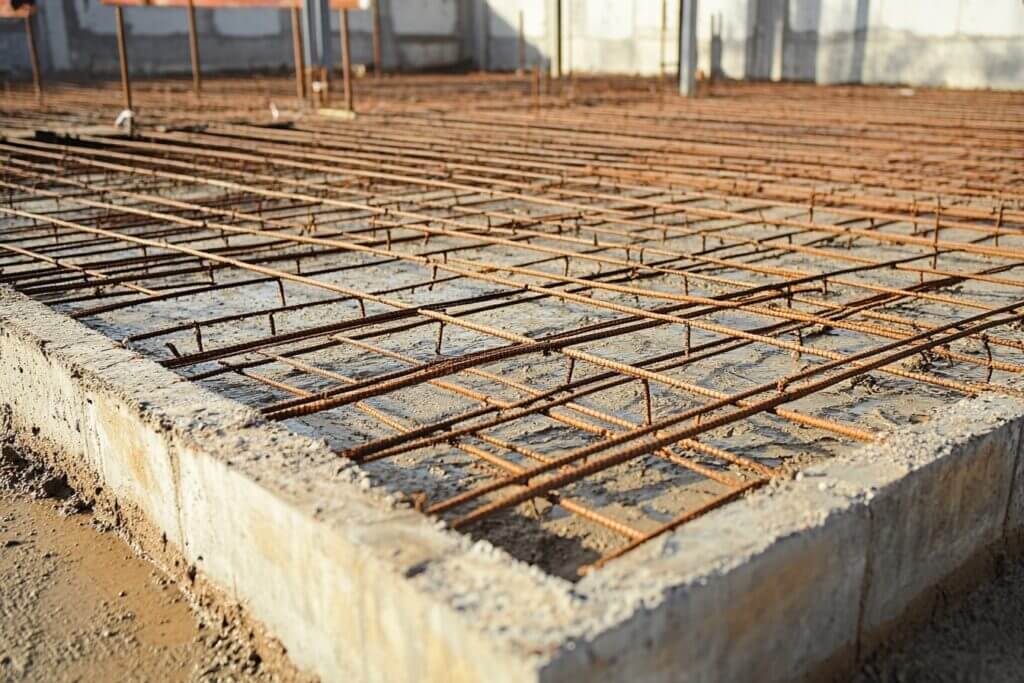
Pros:
- Distributes weight evenly, reducing the risk of differential settlement.
- Supports heavy structures in poor soil conditions.
- Works well on wide floor plans or irregularly shaped homes.
Cons:
- Requires a large volume of concrete, making it costly.
- Needs skilled engineering to ensure proper reinforcement.
- More complex than shallow foundations.
8. Drilled Shaft (Caisson) Foundation
Drilled shaft foundations, or caissons, are deep foundations similar to piles but with larger shafts. They are used to support heavy structures, especially in areas where the soil near the surface is not strong enough to bear the load.
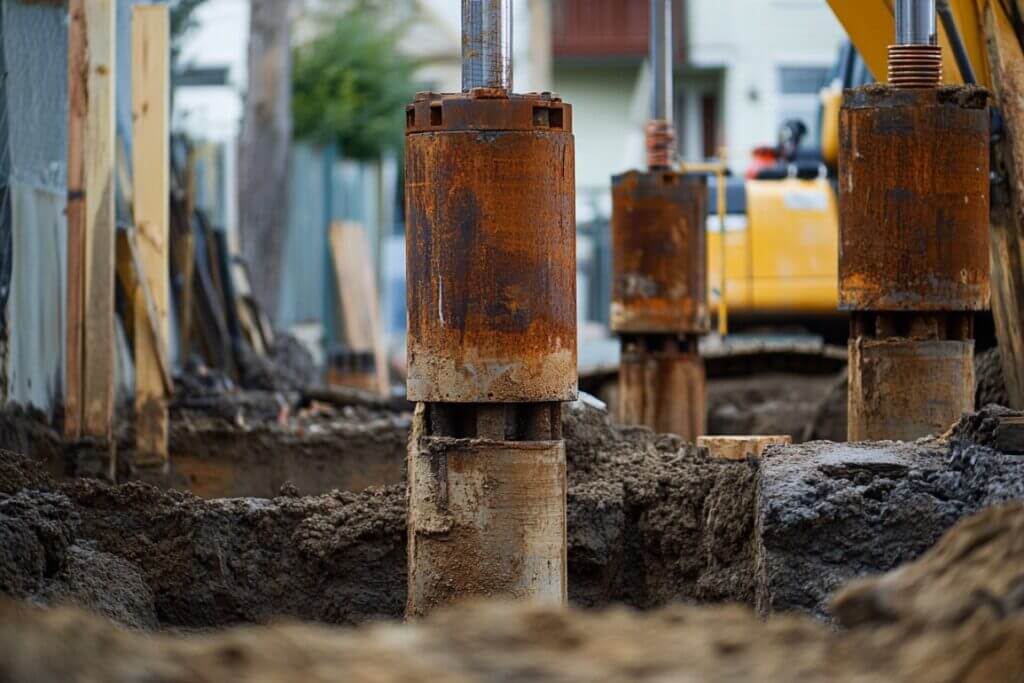
Pros:
- Exceptional load-bearing capacity.
- Long-lasting when properly installed.
- Minimizes settlement risks in unstable soils.
Cons:
- Expensive due to labor and specialized equipment.
- Requires significant expertise to design and install.
- Overkill for smaller residential projects unless the soil demands it.
Factors to Consider When Choosing a Foundation
The right foundation for your home depends on a mix of site conditions, climate, and budget. Here are some key factors to keep in mind:
- Soil Type and Conditions: The ground beneath your home plays a huge role in how well a foundation will perform. For example, clay-heavy soils expand and shrink with moisture, which can stress foundations over time. A soil test can help determine what type of foundation is best for your lot.
- Climate and Weather Patterns: Homes in cold regions need deeper foundations that can handle freeze-thaw cycles, while those in rainy or flood-prone areas may require waterproofing or drainage systems.
- Building Design and Load Requirements: The size, shape, and weight of your home also matter. Larger homes with multiple stories often need more robust foundations, while smaller single-story homes may be well-suited to simpler options.
- Cost Considerations: Some foundation types are more affordable to build upfront, while others may save money long term by reducing maintenance and repair needs. It’s worth weighing both construction costs and potential foundation repair costs down the road.
What Is the Best Type of Foundation for a House?
The best foundation type depends on your home’s location, soil conditions, and budget; there isn’t a single “one-size-fits-all” answer. Different foundations are designed to perform well in different environments.
- Slab foundations are often considered the most cost-effective option (learn about pricing in our concrete slab cost guide). They work best in warm climates where the ground doesn’t freeze, and they’re a popular choice for new builds in the South and West.
- Basement foundations are the top pick in colder climates. They provide deep support below the frost line and add extra living or storage space, which boosts home value.
- Crawl space foundations are a good middle ground. They’re common in humid or flood-prone areas because they raise the home above ground level and allow better ventilation.
- Pier and beam foundations work well on sloped or uneven terrain since they can be adjusted more easily than slabs.
If you’re building or evaluating a home, a foundation contractor can help determine the best option by considering local climate, soil type, and your long-term needs.
Which Foundation Types Are Most Common in the U.S.?
In the U.S., the most common foundation type depends largely on geography and climate:
- Slab foundations are the most common overall, especially in the South and West. They’re affordable, simple to build, and ideal for areas without frost.
- Crawl space foundations are widely used in the Southeast and parts of the Midwest, where higher humidity and occasional flooding make ventilation important.
- Basement foundations dominate in the Northeast and Midwest. Colder climates require deeper foundations below the frost line, making basements a natural choice; plus, they provide extra living space.
Other types, like pier and beam or pile foundations, are less common nationwide but are often used in areas with unique soil conditions, flood risks, or uneven terrain.
Knowing what’s typical in your region can help you understand your options and even spot potential red flags when buying a home.
Compare top-rated foundations pros in your area.
Read real homeowner reviews, explore qualifications, and view promotions. Modernize makes it easy to browse professionals and find one that will be perfect for your project.

